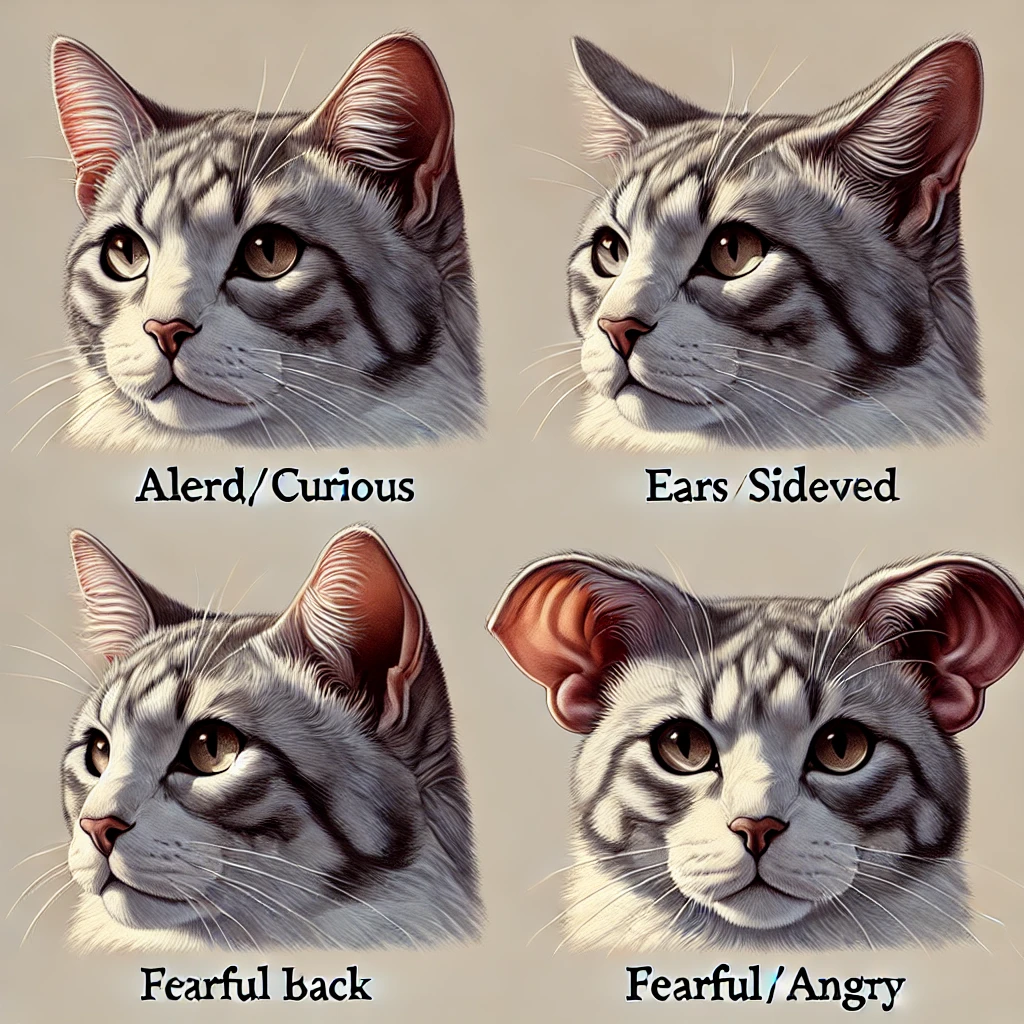Unlock the secrets of your cat’s emotions by understanding their cat ear positions.
Introduction
Have you ever wondered what your cat is trying to tell you with those ever-moving ears? Cat ear positions are a fascinating aspect of feline communication. By paying attention to your cat’s ears, you can gain valuable insights into their emotional state—whether they’re curious, irritated, or feeling anxious. In this article, we’ll explore the different meanings behind your cat’s ear movements and how to interpret them in context with other behaviors.
The Importance of Cat Ear Positions in Feline Communication
Cats have an incredible range of ear movements, thanks to the 32 muscles that control each ear. These movements aren’t just random twitches; they’re deliberate signals that convey how your cat is feeling at any given moment. Understanding these signals can help you respond appropriately to your cat’s needs, strengthen your bond, and even prevent potential behavioral issues.
Read more about cat communication
Meanings of Different Cat Ear Positions
Ears Forward
When your cat’s ears are pointed forward and slightly outward, it’s generally a sign of positive interest.
- Curiosity and Alertness: Your cat is attentive and engaged with their surroundings. They might have spotted something intriguing, like a toy or a fluttering bird outside the window.
- Happy and Relaxed: Forward ears can also indicate that your cat is feeling content and comfortable.
Ears Back
Ears flattened back against the head are a warning sign.
- Fear and Anxiety: This position often means your cat is scared or anxious. They might flatten their ears to protect them in a perceived dangerous situation.
- Aggression: Combined with hissing or growling, ears pinned back can signal that your cat is ready to defend themselves. It’s best to give them space in this case.
Ears Sideways (“Airplane Ears”)
When your cat’s ears are turned sideways and flattened, resembling airplane wings, it indicates uncertainty.
- Irritation or Overstimulation: Your cat might be feeling annoyed or overstimulated, especially if petting has gone on for too long.
- Nervousness: Sideways ears can also suggest that your cat is feeling nervous about a new person or animal in their environment.
Ears Swiveling
Cats can rotate their ears almost 180 degrees, and swiveling ears are highly expressive.
- Listening Intently: Rapid ear movements indicate that your cat is trying to pinpoint the source of a sound.
- Heightened Alertness: Swiveling ears can mean your cat is on high alert, possibly detecting something you can’t hear.
Learn how to recognize your cat’s ear positions
How Cat Ear Positions Reflect Emotions
Understanding the emotions behind these ear positions can help you better cater to your cat’s needs.
Interest and Curiosity
- Ears Forward: Indicates that your cat is eager to explore or interact.
- Tiptoeing with Forward Ears: They might be stalking a toy or insect.
Irritation and Overstimulation
- Ears Sideways: Suggests that your cat has had enough of the current activity.
- Tail Flicking with Sideways Ears: A sign to stop petting or playing for a while.
Fear and Anxiety
- Ears Back and Flattened: Your cat is scared and may need a safe space.
- Crouching with Ears Back: Indicates a desire to hide or escape the situation.
Aggression
- Ears Back Combined with Hissing: A clear warning to stay away.
- Dilated Pupils and Ears Back: Your cat might be preparing to defend themselves.
Interpreting Ear Signals in Context with Other Behaviors
While cat ear positions provide valuable clues, they should be interpreted alongside other body language signals for a complete understanding.
Tail Movements
- Puffed Tail with Ears Back: Sign of fear or aggression.
- Slow Waving Tail with Ears Forward: Indicates focused attention, possibly during play.
Eye Expressions
- Dilated Pupils: Can signify excitement, fear, or aggression.
- Slow Blinking with Ears Forward: Shows relaxation and trust.
Vocalizations
- Purring with Ears Forward: Contentment.
- Growling or Hissing with Ears Back: Warning signs of discomfort or aggression.
Body Posture
- Relaxed Body with Ears Forward: Your cat is happy and comfortable.
- Tense Muscles with Ears Sideways: Indicates uncertainty or irritation.
Learn more about cat body language
Practical Tips for Responding to Your Cat’s Ear Signals
Understanding your cat’s ear positions can help you make better decisions in interacting with them.
- Approach Slowly: If ears are forward, it’s usually safe to approach.
- Give Space: If ears are back or sideways, it’s best to give your cat some room.
- Engage in Play: Forward ears and an alert posture might mean your cat wants to play.
- Provide Comfort: If your cat shows signs of fear, create a safe and quiet environment for them.
Tips for building trust with your cat
Conclusion
By paying attention to cat ear positions, you can gain a deeper understanding of your feline friend’s emotions and needs. This not only helps in strengthening your bond but also in creating a more harmonious living environment. Remember, your cat’s ears are like little mood antennas—tune in to what they’re saying, and you’ll both be happier for it.






